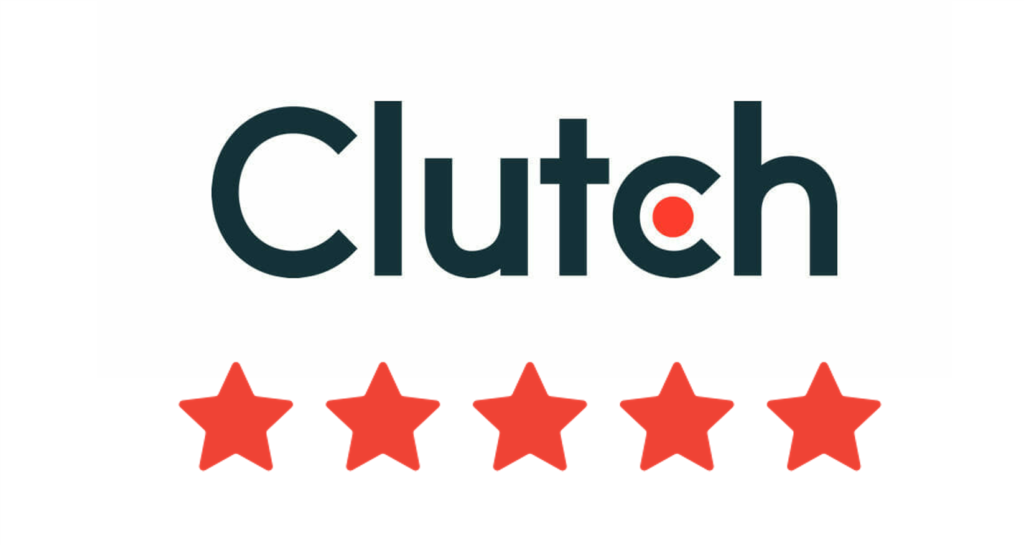Persuasive ad language is the core of effective marketing efforts in today’s brutally competitive digital marketplace, where attention spans are brief. Advertisers use persuasion to get consumers interested in their products, from TV advertisements to social media marketing. Persuasive advertising efforts often prioritize emotion and desire over just presenting information to potential clients.
As a digital marketing expert, you already understand the critical role persuasive advertising plays in boosting engagement, clicks, and conversions. As marketers, we understand that in order to persuade an audience, we must elicit an emotional reaction from them. “But how do you actually do that?”
Let’s first understand what persuasive advertising is and why you’d want to employ them.
What is Persuasive Advertising?

Persuasive advertising is a sort of communication focused on persuading potential customers to do a specific action, generally making a purchase or adopting a specific behavior. The aim of persuasive advertising is to persuade the target audience that a brand’s product or service is the best option, developing a favorable attitude and promoting the desired response.
This strategy is effective for advertising a product. Persuasion may be used in almost every marketing effort, including television, digital, print, radio, billboards, and even PPC.
Persuasive advertising aims to provoke an emotional response from viewers by appealing to their own sentiments and emotions in order to create a good association with items. Customers are more likely to purchase from your business if you frame the items positively.
Persuasive advertising considers three main types of emotion:
- Ethos: Ethics, credibility, and personality
- Logos: Reason and logic
- Pathos: Emotions and feelings
Depending on the type of persuasive ad you want to make, you should focus on one emotional category and construct your message around the values of that category.
This assists you in avoiding unclear messages and enables you to create an advertisement that appeals to your target audience appropriately.
Now that you have a clearer idea of what persuasive advertising is, let’s look at some of the numerous techniques you may employ in digital advertising strategies for your own company.
You may use these techniques to produce persuasive advertising examples that are visually appealing.
Persuasive Advertising Techniques
1. The Carrot and the Stick
One of the most common persuasive advertising methods is the carrot and stick.
It seems to reason that individuals prefer rewards over penalties. A carrot in advertising refers to the possible advantages that a consumer will have from using a product, whereas a stick refers to the potential loss that a client would have if they do not use your product.
An advertisement may emphasize the benefits of utilizing a product, such as a better complexion for a moisturizing company, as or it may highlight loss, such as the increased risks of a robbery when a consumer does not purchase your brand’s home security system.
These types of persuasive methods succeed because they get into some of our most deeply rooted emotions.
2. The Scarcity Principle
You, like many others, certainly believe it’s amazing to have collectibles and limited-edition products.
As it can’t belong to just anybody, it makes the one you have to appear more important. This is an example of the scarcity principle in action, and it’s an effective technique for compelling advertising.
You may encourage your audiences to make a purchase choice fast if you make it appear as if your product is a limited offer, a one-time-only bargain, or comes from a limited supply.
It appeals to feelings of power and self-worth to have items that others do not have or did not have the opportunity to acquire on time.
3. Writing in the Second Person
Using second-person language with pronouns such as “you” and “yours” is another essential approach in persuasive advertising.
It enables you to interact and engage with audiences on a more personal level, and it can be employed to capture their attention and assist them in visualizing your products and services in the present rather than the future.
4. One Message Per Advertisement
Stick to only one message to immediately hook people and persuade them to read or watch the rest of your advertisement. Highlighting the main benefit or feature of your product or offer will make it easier for your customers to understand its value and increase the likelihood of their conversion because you’re only conveying one message to your audience: your product’s main feature will benefit your customer’s life in some way.
5. Give Your Audience a Sense of Control
“Control is a biological and psychological necessity.” People must believe that they have control over their life. You must provide your audience the freedom to choose if you want to give them a sense of control. In other words, after reading or viewing your commercial, people should feel as if they have a choice between the solution you recommend and another. If people believe you are attempting to compel them to buy your goods, they will become irritated and withdraw from your message.44;
Use phrases like “Feel free” or “No pressure” in your advertisements to give your audience the ability to choose, and thus a sense of control.
6. The Call to Value
We’ve all seen a call to action in marketing collateral as marketers. This is the push you provide clients and the action they must take to go to the next stage of the customer journey.
It is beneficial in persuasive advertising to make the CTA a CTV, or call-to-value. This communicates to audiences that by clicking the button or ad, they are improving their life.
7. The Celebrity Association
Using celebrities and influencers to make your offer to clients more appealing is another great method for persuasive advertising.
People want to be like the people they respect, and using a celebrity endorsement or affiliation makes your items look more desirable and may persuade your clients to buy now rather than wait.
8. The Bandwagon Appeal
Nobody likes to feel excluded or left behind. Joining the bandwagon is the technique of convincing buyers that they will miss out on popularity if they do not have a specific product or commodity.
Rather than feeling left out, a client will strive to acquire the goods in order to participate in the attraction and satisfy their want to belong
Persuasive Advertising Examples
To excel in persuasive advertising, it might assist to have some diverse examples of what a persuasive ad would seem like once it is issued.
Let’s look at some of the most effective and recognizable persuasive advertising examples from leading businesses throughout the world.
1. Heinz
To appeal to UK consumers, Heinz, the condiment company, employed persuasive advertising in collaboration with artist Ed Sheeran.
Ed Sheeran, a well-known Heinz lover, participated in an advertisement in which he added the product to a variety of foods as well as elegant and lavish restaurants.
2. Clorox
Clorox, the cleaning supply company, employed persuasive advertising in its “Trusted by Moms” campaign.
The commercial employed wording that focused on how moms are trusted cleaners as an emotional hook to connect with people.
And, by omitting specifics on how many mothers purchased their items, they were able to connect with mothers as a whole.
3. Mondo Pasta
“With this crafty use of guerrilla marketing, Mondo Pasta perfectly aligns their copy with their creative the guy slurping the noodle literally “can’t let go” because it’s a rope tied to a dock.” People’s eyes can’t get enough of this commercial since it’s so visually appealing, surprising, and literal, with a seemingly one-dimensional object.”
4. Lyft
The ride-sharing firm, employed persuasive advertising in their advertisements in which they acknowledged achievers, hard workers, and drivers.
It was able to create an emotional connection between individuals who try to achieve their objectives and the brand itself by concentrating on the consumers who required the product rather than the ride-share app itself.
5. Siemens
“Siemens’ clever advertisement effectively illustrates the advantages of their product by revealing that their washers and dryers are so quiet that not even a librarian would need to hush them.
6. APPLE
The world-renowned electronics company Apple used reason and common sense to persuade people to buy the newest iPhone at the time.
Rather than contrasting the smartphone with other models, Apple highlighted the technological and physical innovations included in its device, including the robust glass and Face ID software, which are aspects that its target market finds appealing.
7. Burger King
Burger King, a fast-food restaurant chain, used its “Shadow Campaign” to great effect in compelling advertising. Also, can make a menu and share it via social media on festive season is good advertising.
By encouraging customers to tweet their complaints about a rival company, Wendy’s, the campaign created a virtual Twitter war.
Burger King relied on feelings and allowed its patrons to speak for themselves, which gave the message more authority.
8. DELL
Dell Technologies has declared the start of its celebratory #ApnaWalaFestival campaign. The goal of the campaign is to share a message of hope, compassion, and passion. Through Dell’s adaptable technology solutions, the advertisement also highlights how technology empowers individuals to enjoy holidays in their own special ways.
Persuasive advertising may be compared with another sort of digital advertising strategy, informative advertising.
To determine what would work best for your goals and your brand, you must first grasp the distinctions between the two techniques.
What is Informative Advertising?
Informative advertising is a sort of advertising that tries to deliver complete details on a product, service, or issue to consumers. The main objective of informative advertising is to educate the audience so that they may make educated decisions based on the information presented. In contrast to persuasive advertising, which aims to influence emotions and attitudes, informative advertising focuses on providing facts and features.
Informative Advertising Examples
1. FDA The Real Cost Campaign
Nonprofit organizations and government agencies frequently use informative advertising campaigns to promote awareness of policy initiatives or public health problems.
The United States Food and Drug Administration (FDA), for example, undertakes an educational advertising campaign to educate the public about the risks of tobacco.
It is an instructional advertisement that explains the probable problems caused by tobacco use: oral cancer, tooth loss, brown teeth, jaw discomfort, white batches, and gum disease. The bottom of the ad makes the commercial’s thesis obvious, stating that smokeless tobacco products are not harmless.
Although the advertisement may induce dread, it does not rely on emotion to persuade its audience – it is the facts about the hazards of smokeless tobacco products that serve to persuade audiences against using them.
2. Calm
“By sponsoring CNN’s coverage of the 2020 US Presidential Election, popular meditation app Calm saw an increase in downloads.” The app was positioned as a useful resource ready to teach mindfulness during a stressful period through smart product placement in front of an audience that was experiencing stress.
3. The Surfrider Foundation
Similarly, the Surfrider Foundation used an informational advertising campaign to encourage people to support the organization’s sustainable solutions.
The nonprofit organization dedicated to conserving the world’s seas created an educational ad campaign based on studies regarding fish populations’ plastic indigestion.
The advertisement emphasizes one of the organization’s main causes: decreasing the impact of plastics on marine areas.
The analysis is used to deliver the message of environmentally friendly marketing. The advertisement depicts the staggering quantity of yearly plastic pollution and how it is spread amongst people by presenting the findings of current studies.
The creatives may instill panic in their target audience by displaying sushi rolls made of plastic to demonstrate how people consume plastics through fish. However, the feeling can only emerge through the contextualization of the imagery.
The ad’s message is conveyed through its textual content. The emphasis on facts encourages viewers to learn about and implement solutions to plastic pollution in the world’s oceans.
4. Dove
In addition to popular body and skincare products, Dove has set out to educate its audience on the importance of body confidence, as well as the negative impact fabricated social media imagery can have on young people’s self-esteem.
Dove’s reverse selfie ad highlights how social media users may be tempted to alter their looks to get public acceptance. Other Dove products include information and figures about social media usage and body image.
5. Miller Lite
Miller Lite launched an instructive advertising campaign that included product comparisons with competitors.
It sponsored an ad campaign in 2019 that likened itself to Bud Light. Rather than using a celebrity to preach its praises, highlighted the nutritional distinctions between the products.
The advertisement emphasizes the calorie and carbohydrate differences between Miller Lite and Bud Light. It claims that their beer is not only healthy but also tastier than competitors.
It focuses on calorie and carb counts in the advertisement, focusing on facts and data to persuade customers through an educational ad campaign that can be readily linked to digital marketing or social media marketing techniques.
Persuasive Advertising Vs Informative Advertising: Which One is More Important for Your Business?
Informative advertising and persuasive advertising, like other advertising tactics, have advantages and disadvantages.
The primary distinction between the two is that informative advertising uses numbers and data, whereas persuasive advertising relies on emotions, but they all have the same goal in mind: convincing your audience to take the desired action. So, regardless of which advertising method you use, remember that if you are able to provoke an emotional response, regardless of the stimulus, the advertisement will be successful.




